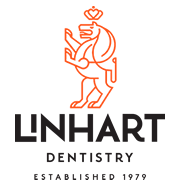Unless your dentist has a numbing personality, dentistry is best performed under controlled local anesthesia.
Cocaine was one of the first effective local anesthetics used in dentistry, then came the all too popular novocaine, and today, lidocaine is the most commonly used dental anesthetic (although it is usually still referred to as novocaine by the layman).
These local anesthetics can be administered with epinephrine, to produce a longer effect, or without epinephrine, in patients with significant heart conditions or other medical issues.
Painless dentistry should be synonymous with dentistry in general, however many dentists do not provide the proper dose or location of local anesthetic. In Dr. Linhart’s office, they use a device called The Wand, which controls the rate of injection, thereby reducing the pain of injection. I have seen Dr. Linhart perform hundreds of procedures and never have I seen a patient in pain. By giving injections in the proper location, with the correct technique, and getting patient feedback on their pain state, Dr. Linhart is able to eliminate pain from dentistry.
In my studies in dental school, I have learned how to inject and where to inject local anesthesia, but not until I have done in hundreds of times do I expect to become skilled enough to call myself a completely painful dentist, like my dad, Dr. Linhart, truly is.
